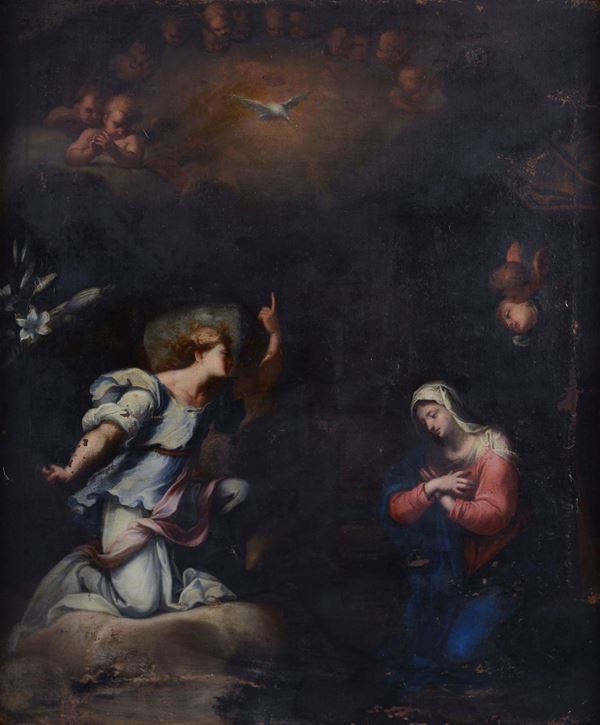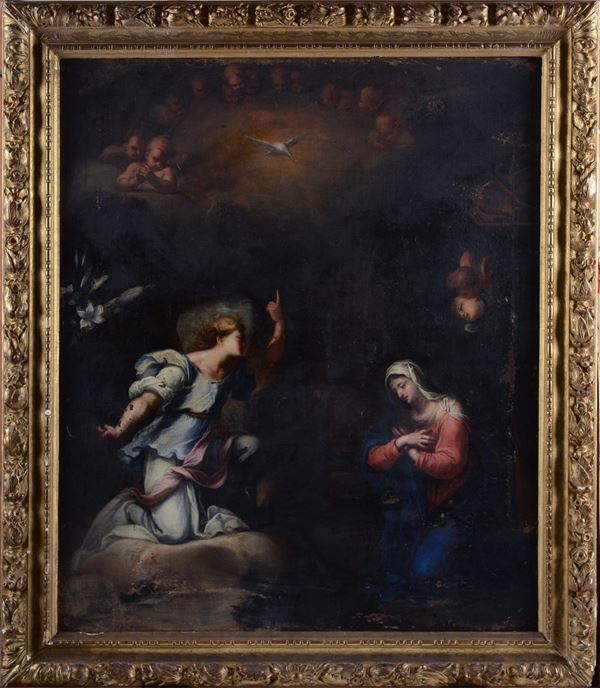Etienne Villequin (Ferrières-en-Brie, 1619 - Parigi, 1688)
Annunciation, (1655)
Coeval frame in carved and gilded wood. Expertise by Sylvain Kerspern.
In an interior immersed in darkness, the angel Gabriel who appears on a cloud stands in front of the Virgin, with arms crossed and head humbly bowed, kneeling to the right. The forefinger of the left hand of the messenger of God is pointed towards the dove of the Holy Spirit hovering in the heart of the divine light that occupies the upper part of the room, accompanied by cherubim resting on other clouds. Cherubim fly above Mary's head. The arrangement of the figures, the typology of the characters and their relationship with the space place the interpretation of the subject in the classical movement of Bolognese inspiration, in particular that of Francesco Albani [...]. Among the many French painters in whom it is possible to perceive the Bolognese influence (from Jacques Stella to Charles Le Brun via Pierre Mignard and their numerous collaborators or students), one artist offers clear connections with the work of our Annunciation: Étienne Villequin ( 1619 -1688).
The painter is among the still little-known artists of the time, despite some engravings reflecting his production and his participation in the Royal Academy of Painting and Sculpture.
François Marandet (2017) began to rehabilitate it. He was baptized in Ferrières-en-Brie (now Seine-et-Marne, France) on 3 May 1619. He was the half-brother of Edme Villequin (1607-1676), an actor in Molière's company under the name of “M. de Brie”. We know nothing about his training, which must have taken place in Paris around 1635-1640. He belongs to the generation of Louis Testelin (1615-1655), Thomas Blanchet (c. 1614-1689), Sébastien Bourdon (1616-1671), Eustache Le Sueur (1616-1671), Charles Le Brun (1619-1690), Charles Dauphin (c. 1615/1620-1677), Nicolas Loyr (1624-1679). Most of them trained with Simon Vouet while they underwent the ascendancy of François Perrier, his collaborator in 1630-1634 [...]; all these authors took a trip to Italy following Perrier. A similar stay for Villequin can be deduced in particular from the evident influence of the Carraccis.
(extract from Sylvain's expertise Kerspen)






